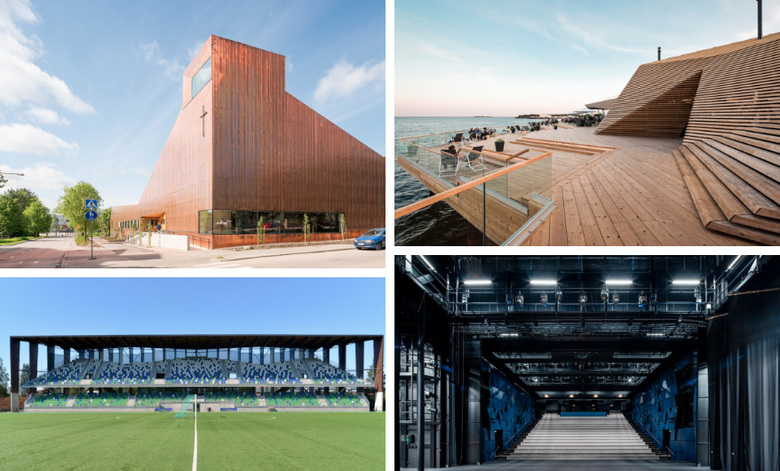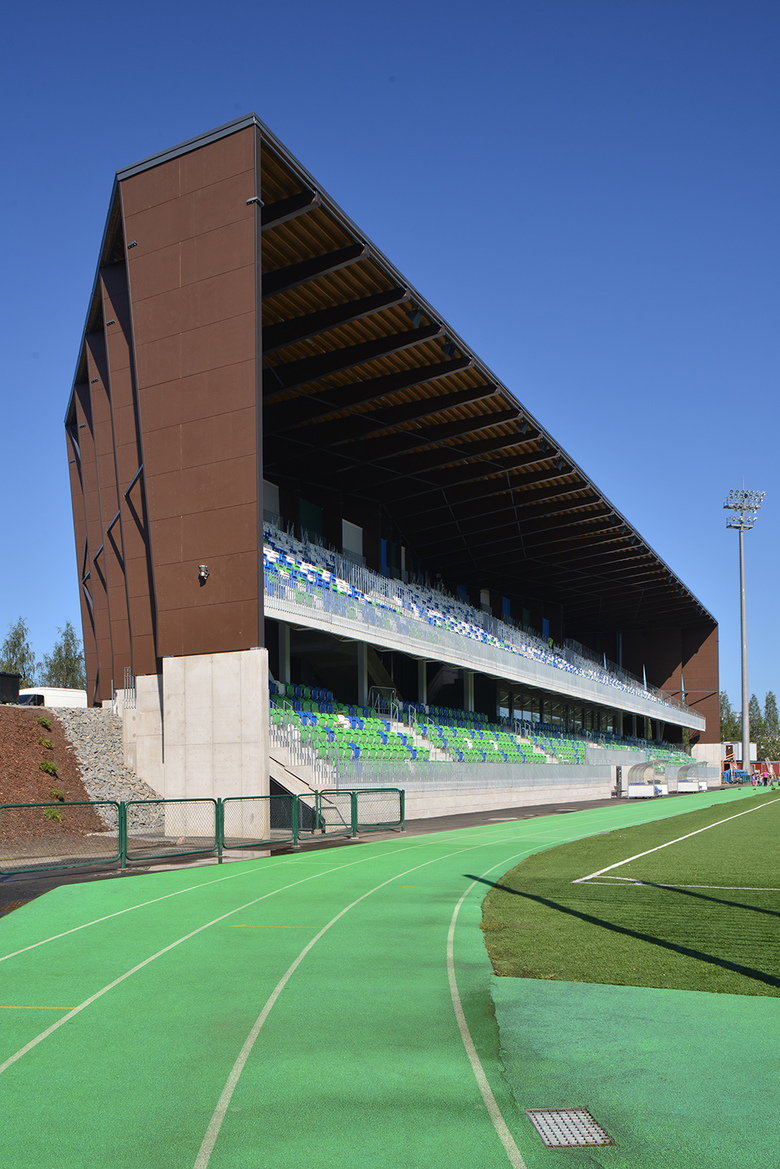Finlandia Prize Finalists Announced
John Hill
12. September 2016
Photo: Courtesy of SAFA
The Finnish Association of Architects (SAFA) has announced the four finalists of the third annual Finlandia Prize for Architecture: Lappeenranta City Theatre, Löyly, Railo and Suvela Chapel.
The Finlandia Prize for Architecture, which began in 2014, is "awarded for the design or renovation design of an outstanding new building or building complex that has been completed within the past three years," per the prize's website. The stated purpose of the prize is to "promote the appreciation of high-quality architecture and to highlight the importance of architecture in producing cultural value and increasing well-being."
The four shortlisted projects – highlighted below with text and images courtesy of SAFA – were determined by a pre-selection jury (Pirjo Sanaksenaho, Sari Nieminen, Eero Lundén, and Janne Pihlajaniemi), and the winner will be selected by Paavo Lipponen, former Prime Minister of Finland. The winner will be announced at an award ceremony on 13 October in Helsinki.
Lappeenranta City Theatre
Lappeenranta City Theatre (Photo: Tuomas Uusheimo)
"The Lappeenranta City Theatre is housed, unusually for a theatre, within a new extension of a shopping mall. The Pre-Selection Jury finds that the concept in which a large public building is housed within a commercial building ultimately creates an intriguing setting for a new type of theatre building to emerge. The foyer of the theatre opens up towards the high central hall of the mall. The public spaces are furnished with dark monochrome and metallic surfaces providing a convincing contrast to the abundance of colour and information stimuli of the shopping mall. Built on one level, the theatre centres around a tight group of large hall spaces. Its elegant simplicity raises the ambiance above and beyond the ordinary. Completed in 2015, the theatre was designed by ALA Architects (architects Juho Grönholm, Antti Nousjoki, Janne Teräsvirta and Samuli Woolston)."
Lappeenranta City Theatre (Photo: Tuomas Uusheimo)
Löyly
Löyly (Photo: kuvio.com)
Löyly was erected in Helsinki’s Hernesaari district this year. According to the Pre-Selection Jury, few buildings in Helsinki that are open to the public make such full use of their location by the sea as Löyly does. The horizon is visible from almost all indoor spaces and the views can also be taken in from the roof. The building is a mound clad in wooden lamellas that beautifully reflect the light thanks to their triangular profile. The wood used on the elevation will acquire a grey patina over time, so that, from a distance, it will look like one of the bare granite rocks emblematic of the Helsinki coastline. The slats provide discrete privacy to those using the saunas, while allowing a sea view from inside. The building was designed by Avanto Architects (architects Ville Hara, Anu Puustinen, Antti Westerlund and Hiroko Mori; architect students Laura Nenonen and Xiaowen Xu).
Löyly (Photo: kuvio.com)
Rovaniemi Sports Arena RAILO
Rovaniemi Sports Arena RAILO (Photo: Aaro Artto)
The spectator stand of the Rovaniemi Sports Arena, Railo, and the boulder-shaped residential and office buildings, once completed, will form a crevasse-like roadway winding between them. The building is located within the so-called “Reindeer Antler” town plan designed by Alvar Aalto, near the town centre of Rovaniemi. The stand has a very different look depending on the direction from which it is viewed. When seen directly from the front, from the other side of the pitch, the structure looks like a lean and lightweight canopy supported by columns. The best view of the spectator stand is from a distance: a large-scale, statuesque sports arena. According to the Pre-Selection Jury, the new sports arena and multipurpose building add a contemporary edge to the city’s high-quality architecture. Railo was designed by APRT Architects (architects Aaro Artto, Teemu Palo, Yrjö Rossi, Hannu Tikka and Jussi Vakkilainen).
Rovaniemi Sports Arena RAILO (Photo: Aaro Artto)
Suvela Chapel
Suvela Chapel (Photo: Mika Huisman)
The Suvela Chapel creates a natural highpoint within its surroundings.Some of the spaces are used by the City of Espoo residents’ park. The building also houses some facilities serving the residents’ park, making it a natural meeting point for people of all ages. The building forms clear delineation for traffic routes around it and the yard area it encloses. The copper clad building extends from the ground over the roof and belfry, resulting in a sculptural impression. The interior of the main hall is powerful in its simplicity. Completed in 2016, the chapel was designed by OOPEAA Office for Peripheral Architecture (architects Anssi Lassila, Iida Hedberg, Juha Pakkala, Teemu Hirvilammi, JussiPekka Vesala, Hanna-Kaarina Heikkilä, Anis Souissi and Miguel Silva).
Suvela Chapel (Photo: Mika Huisman)
Related articles
-
Finlandia Prize Finalists Announced
on 9/12/16








